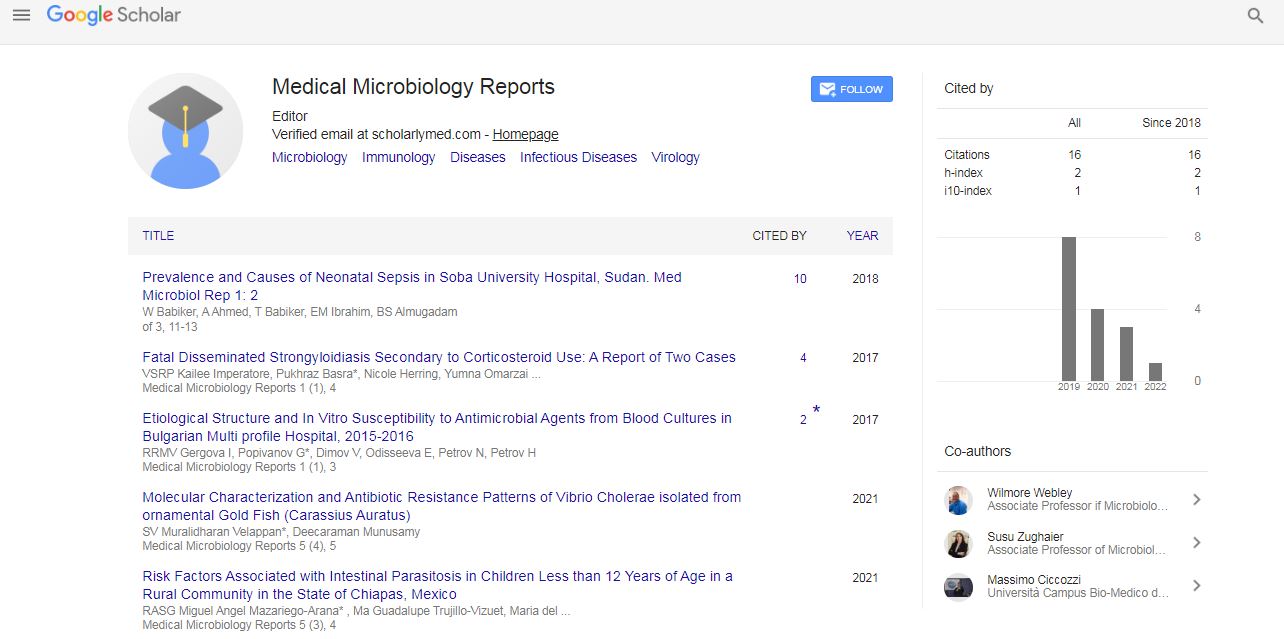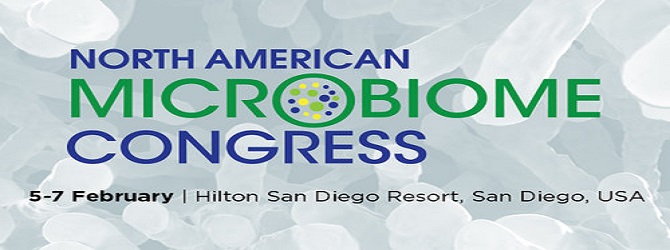Perspective, Med Microbiol Rep Vol: 6 Issue: 3
Risk Elements for Invasive Superficial Fungal Infections
Walter*
Department of Infectious Diseases, Infection Control and Employee Health, The University of Texas M.D., Houston, USA
*Corresponding Author: Walter
Department of Infectious Diseases, Infection Control and Employee Health, The University of Texas M.D., Houston, USA
Email: geowalter@gmail.com
Received date: May 03, 2022, Manuscript No: MMR-22-13493;
Editor assigned date: May 05, 2022, PreQC No. MMR-22-13493 (PQ);
Reviewed date: May 16, 2022, QC No. MMR-22-13493;
Revised date: May 26, 2022, Manuscript No. MMR-22-13493 (R);
Published date: June 03, 2022, DOI: 10.4172/mmr.1000322
Citation: Walter (2022) Risk Elements for Invasive Superficial Fungal Infections. Med Microbiol Rep 6:3.
Keywords: Fungal Infections
Description
Zygomycosis is a term used to depict a gathering of contagious diseases brought about by pathogenic molds having a place with the class Zygomycetes of the phylum Zygomycota. The parasites in this class distinctively produce thick-walled resting spores called zygospores following gametangial combination inside a zygosporangium for their sexual multiplication. A Agamic propagation of these parasites utilizes the nonmotile sporangiospores in the sporangia. The ordered characterization of Zygomycetes and the phrasing of illnesses brought about by this gathering of organisms have been confounding and are still in transition. The new utilization of cutting edge sub-atomic strategies has adjusted the characterization of Zygomycetes. The term zygomycosis is right now used to extensively depict any illnesses brought about by the individuals from the class Zygomycota. The molds in this class contain two contagious pathogenic gatherings of clinical significance, the orders Mucorales and Entomophthorales. Truth be told, these two sets of organisms produce different clinical indications of human diseases. Mucorales regularly produce a gathering of intense beginning and somewhat quick, forceful, deadly, angioinvasive sicknesses called mucormycoses, though Entomophthorales produce a gathering of illnesses called entomophthoramycoses, which are more inactive and persistently moderate.
Notwithstanding, it has been plainly shown that the geographic dissemination and the obtrusiveness of the sicknesses brought about by Entomophthorales, alongside the scope of contaminated has, have widened. Entomophthorales can deliver clinical disorders vague from those brought about by Mucorales, and it is difficult to separate these two sets of parasites dependent exclusively upon histopathological assessment or epidemiologic perceptions. Zygomycosis is at this point not a phenomenal sickness, due to a limited extent to the proceeded with ascent of diabetes and the expanded utilization of immunosuppressive specialists in the ongoing period of cutting edge current medication.
Epidemiology of Zygomycosis
Succession examination for the plan of the groundworks and test. rRNA quality arrangements from 42 creatures were gotten to through the GenBank data set and were adjusted by utilizing the Wisconsin Sequence Analysis Package. Various likely preliminary restricting destinations for the panfungal groundwork pair were picked by contrasting districts of Aspergillus homologous and areas of the parasitic gathering from the contagious realm with the most different DNA successions, Mucor, and locales of Aspergillus garbled with the human DNA arrangement. The groundwork choice was streamlined for liquefying temperature proportionality, absence of duplex, clasp, or preliminary dimer development, and inside steadiness by utilizing OLIGO programming (National Biosciences Inc., Plymouth, Minn.). Intensification conditions for A. fumigatus and C. albicans were upgraded independently by a formerly portrayed technique.
Subjects and assortment of examples. Entire blood examples were gathered from patients at the Fred Hutchinson Cancer Research Center in Seattle, Wash., put in Vacutainers containing 1.5 ml of corrosive citrate dextrose (ACD) anticoagulant, and put away at 4°C. Composed informed assent was acquired from all subjects by methodology supported by the Institutional Review Board of the Fred Hutchinson Cancer Research Center. Mouthwash examples for contagious societies were gotten consistently to decide colonization status. Blood societies were performed with the BacT/Alert FAN high-impact culture bottle in mix with the Isolator vigorous culture tube. To acquire examples from the days going before disease, patients were approached to give 6 ml of entire blood examples tentatively consistently. Assuming that the patient gave side effects or indications connecting with parasitic illness, we endeavored to gather examples day to day while the clinical workup for infection continued. Patients from whom forthcoming examples were not gathered were inquired as to whether a contagious disease happened, despite the fact that examples would postdate the beginning of the parasitic contamination.
Spore Germination and Penetration
BMT beneficiaries without clinical, radiographic, biopsy, or culture proof of contagious disease were characterized as patients with "no contamination." Recipients in whom parasite was recognizable at shallow locales were thought of "colonized" and were not tried further for this plausibility study. Examples taken from patients with culture or histopathologic proof of parasite from sterile tissue destinations were viewed as patients with "intrusive sickness." Patients without any examples gathered during a 2-week window at the hour of documentation of contagious disease were not tried by the PCR examine, and the leftover examples were disposed of. Measure results for sequential examples from 10 patients that were tried in PCR runs with proof of tainting in the negative extraction controls or the negative intensification controls were disposed of.
Microbe entrance of the host is worked with by direct nearby mechanical strain during appressorium advancement, enzymatic processing of plant hindrances or by the more fortunate accessibility of stomata, wounds and breaks at the plant climate interface. It is for the most part accepted that during spore germination and the infiltration stage, the phytopathogenic organisms are in a condition of starvation and are totally dependent on supplements got from interior stores. The significant parts of contagious spore stores incorporate glycogen, trehalose, polyols like mannitol and lipids. Ongoing proof from a few plant-microorganism frameworks plays zeroed in with respect to unsaturated fat preparation during the infiltration interaction. Preparation of lipid stores happens through lipolysis and β-oxidation cycles to shape acetyl-CoA, which is additionally absorbed into the Krebs cycle (TCA cycle) by means of the glyoxylate cycle. The glyoxisomal protein isocitrate lyase (ICL), a marker for lipolytic movement, is instigated without a trace of glucose and during development on gluconeogenic carbon sources like acetic acid derivation and ethanol, and on unsaturated fats. During disease, ICL advertiser action was identified overwhelmingly in the prepenetration stage on the plant surface and declined after appressorial infiltration, showing a change from gluconeogenic to glycolytic digestion at this stage. A few freaks wherein harmfulness is decreased were viewed as faulty in peroxisomal advancement, or disturbed in the glyoxylate cycle proteins ICL and malate synthase. The discoveries show an all inclusive job for unsaturated fat digestion and glyoxylate cycle during plant entrance, paying little mind to pathogenic way of life. Curiously, in certain investigations, glucose had the option to supplement the deficiency of pathogenesis. The ramifications are that a basic job for the unsaturated fat metabolic action is the help of the TCA cycle through acetyl-CoA creation to produce ATP under the unfortunate supplement conditions that exist at the plant surface. An extra job for unsaturated fat digestion in glycerol creation was exhibited in the ICL freak in Magnaporthe grisea, which shows postponed appressorium turgor age.
 Spanish
Spanish  Chinese
Chinese  Russian
Russian  German
German  French
French  Japanese
Japanese  Portuguese
Portuguese  Hindi
Hindi 
